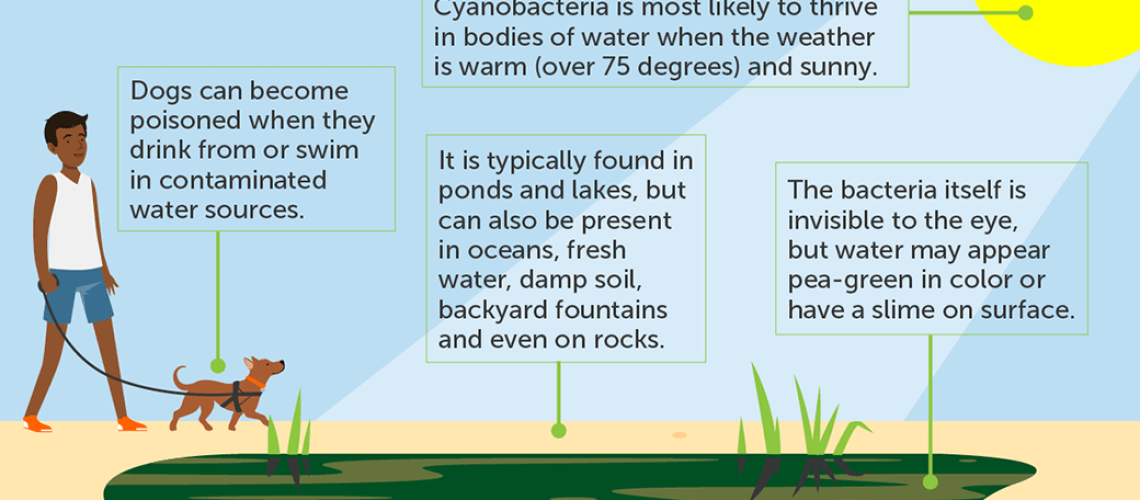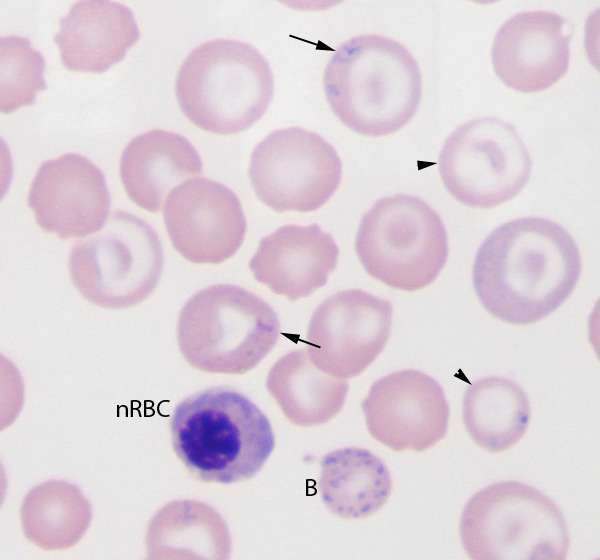Key Takeaways:
- Avoid letting your dog swim in bodies of water that have visible blue-green algae blooms.
- Be cautious of stagnant or slow-moving water sources, as they are more likely to contain blue-green algae.
- Keep your dog hydrated with clean, fresh water to discourage them from drinking contaminated water.
- Watch out for symptoms such as vomiting, diarrhea, excessive drooling, or difficulty breathing, which may indicate blue-green algae poisoning.
- If you suspect your dog has been exposed to blue-green algae, seek immediate veterinary attention to prevent serious health complications.
Attention all dog owners! Are you ready to keep your furry friend safe this summer? Picture this: the sun is shining, the weather is warm, and you're excited to take your canine companion on a fun-filled adventure near a beautiful lake or pond. But before you dive into those refreshing waters, there's something crucial you need to know. Understanding how to protect your dog from blue-green algae is not just important, it's essential for their well-being. This hidden danger can lurk in bodies of water, posing serious health risks for dogs if ingested. But fear not! In this article, we will explore everything you need to know about blue-green algae and equip you with practical tips to keep your beloved pet safe and sound throughout the summer months. So let's dive right in and ensure that every wagging tail stays happy and healthy!
What is blue-green algae and why is it important to protect your dog from it during the summer?
Blue-green algae, also known as cyanobacteria, are microscopic organisms that can be found in bodies of water such as lakes, ponds, and rivers. They are called "blue-green" because they can produce a greenish or bluish color on the surface of the water. While some types of blue-green algae are harmless, others can produce toxins that are harmful to humans and animals.
It is important to protect your dog from blue-green algae during the summer because exposure to toxic algae can lead to serious health problems. Dogs are particularly vulnerable as they often enjoy swimming and playing in lakes or ponds. If a dog ingests water contaminated with toxic blue-green algae, it can cause symptoms such as vomiting, diarrhea, weakness, difficulty breathing, seizures, and even death.
To keep your furry friend safe, it's crucial to be aware of the presence of blue-green algae in bodies of water where your dog likes to swim. Taking precautions and knowing how to identify harmful algae can help prevent your dog from getting sick.
The Importance of Protecting Your Dog
Protecting your dog from blue-green algae is essential for their well-being. Dogs love being outdoors and exploring nature, but it's our responsibility as pet owners to ensure their safety. By understanding the dangers associated with toxic algae blooms and taking necessary precautions, we can minimize the risk of our dogs coming into contact with harmful substances.
Why Summer Increases Risk
During the summer months when temperatures rise and sunlight increases, conditions become favorable for the growth of blue-green algae. Warm stagnant waters like lakes or ponds provide an ideal environment for these organisms to thrive. As a result, there is an increased likelihood of encountering toxic blooms during this season.
- Warmer temperatures promote rapid growth.
- Increased sunlight triggers photosynthesis, aiding algae growth.
- Calm waters allow the algae to accumulate on the surface.
- Nutrient-rich waters from runoff or pollution can contribute to algal blooms.
Being aware of these factors and knowing how to spot potential signs of toxic blue-green algae can help you protect your dog from harm.
Identifying harmful blue-green algae in bodies of water
What is blue-green algae?
Blue-green algae, also known as cyanobacteria, are microscopic organisms that can be found in freshwater lakes, ponds, and rivers. They are usually present in low numbers and play a vital role in the ecosystem. However, under certain conditions, such as warm temperatures and excess nutrients in the water, these algae can multiply rapidly and form harmful algal blooms.
How to identify harmful blue-green algae
Identifying harmful blue-green algae can be challenging as they can vary in appearance. They often resemble green paint or pea soup and may form scums or mats on the surface of the water. These blooms can range in color from green to blue-green, brown, or even red. It's important to note that not all blooms are toxic, but it's best to err on the side of caution.
Signs of a harmful algal bloom:
- Foul odor coming from the water
- Dead fish or other aquatic animals floating on the surface
- Discolored or murky water
- Irritated skin after swimming or wading in the water
- Sudden illness or death of pets or livestock after drinking contaminated water
If you notice any of these signs, it's crucial to keep yourself and your pets away from the water until it has been deemed safe by local authorities.
Signs that your dog may have been exposed to toxic blue-green algae
Recognizing symptoms of blue-green algae poisoning in dogs
If your dog has come into contact with toxic blue-green algae, they may exhibit various symptoms depending on the level of exposure. It's essential to be vigilant and seek immediate veterinary attention if you notice any of the following signs:
Common symptoms of blue-green algae poisoning in dogs:
- Vomiting
- Diarrhea
- Lethargy or weakness
- Difficulty breathing
- Tremors or seizures
- Excessive drooling or foaming at the mouth
If you suspect your dog has been exposed to toxic blue-green algae, do not wait for symptoms to worsen. Contact your veterinarian immediately for guidance on how to proceed.
Preventing your dog from coming into contact with harmful blue-green algae
Tips for keeping your dog safe around bodies of water
As a responsible pet owner, it's crucial to take precautions to prevent your dog from encountering harmful blue-green algae. By following these simple guidelines, you can reduce the risk of exposure:
Preventive measures:
- Avoid letting your dog swim in bodies of water with visible algal blooms.
- Keep an eye out for advisory signs posted near water bodies indicating the presence of harmful algal blooms.
- If you're unsure about the safety of a particular body of water, consult local authorities or environmental agencies for up-to-date information.
- Rinse off your dog thoroughly after swimming in any natural body of water, even if no visible blooms are present.
- Provide fresh drinking water for your dog during outdoor activities to discourage them from drinking potentially contaminated water sources.
By being proactive and taking these preventive measures, you can help ensure the well-being of your furry friend and minimize the risk of blue-green algae poisoning.
Steps to take if you suspect your dog has ingested water contaminated with blue-green algae
Immediate actions to protect your dog's health
If you suspect that your dog has ingested water contaminated with toxic blue-green algae, it's crucial to act swiftly. Taking the following steps can help safeguard their health:
What to do if you suspect blue-green algae poisoning:
- Remove your dog from the water immediately and prevent further exposure.
- Rinse off any visible algae from their fur using clean, fresh water.
- Contact your veterinarian or an emergency veterinary clinic for guidance on next steps.
- Be prepared to provide information about the location and duration of exposure, as well as any observed symptoms.
- Follow the veterinarian's instructions carefully, which may include inducing vomiting or administering activated charcoal.
Remember, time is of the essence when dealing with potential blue-green algae poisoning. Acting quickly can greatly increase the chances of a positive outcome for your beloved pet.
Safe alternatives for dogs to enjoy water activities during the summer
Exploring alternative options for water fun with your dog
While it's essential to be cautious around bodies of water affected by harmful blue-green algae, there are still plenty of safe alternatives for your dog to enjoy refreshing summer activities. Consider these fun options:
Dog-friendly water activities:
- Create a DIY sprinkler system in your backyard where your dog can run through gentle streams of water.
- Set up a kiddie pool filled with fresh water for your dog to splash around in.
- Find a dog-friendly beach or lake that regularly tests its water quality and is free from harmful algal blooms.
- Take your dog on supervised hikes near rivers or streams where they can dip their paws and cool off.
By exploring these safe alternatives, you can ensure that your furry companion stays happy, healthy, and hydrated during the summer months without the worry of blue-green algae exposure.
In conclusion, it is important to keep your dog safe from blue-green algae this summer. By avoiding stagnant water, keeping a close eye on your pet, and seeking immediate veterinary attention if any symptoms occur, you can protect your furry friend and ensure they have a healthy and enjoyable summer.
How do I protect my dog from blue-green algae?
To keep your dog safe from blue-green algae, it is important to prevent them from swimming or drinking water that may be contaminated. Stay vigilant for signs of blue-green algae when taking your dog to the beach, lake, pond, or hiking trail.
Is there a vaccine for blue-green algae for dogs?
While there is currently no vaccine specifically for blue-green algae, it is recommended to have your dog vaccinated for Leptospirosis if you frequently engage in outdoor activities. This vaccination is important for the health and well-being of your dog.
How long does blue-green algae take to affect dogs?
The effects of blue-green algae on dogs can be seen within a short period of time, typically within 30 to 60 minutes. Many dog owners have reported their pets becoming ill during the car ride home, often experiencing symptoms such as vomiting and diarrhea.
What kills blue-green algae naturally?
There are no mechanical or physical methods to control Floating, Blue-Green algae, except for replacing the water in the pond. By exchanging the water with a source that does not have algae growth, the algae in the pond can be diluted.
What time of year is blue-green algae?
During the summer, there is an increased likelihood of blue green algae, also known as algal blooms, occurring in water bodies. These blooms can occur in most bodies of water and are more likely to happen during warm and dry weather. Although they can persist throughout the summer, they may disperse or break up during periods of windy weather.
Can blue-green algae be prevented?
To prevent excessive nutrient runoff into nearby bodies of water, it is important to use the appropriate amount of fertilizers on your farm, yard, and garden. When nutrients enter the water, they can accelerate the growth of algae and cyanobacteria.

















